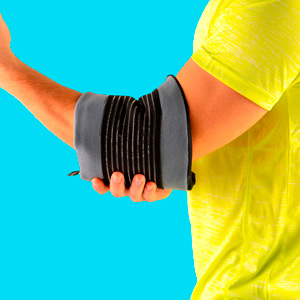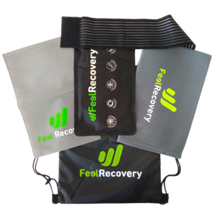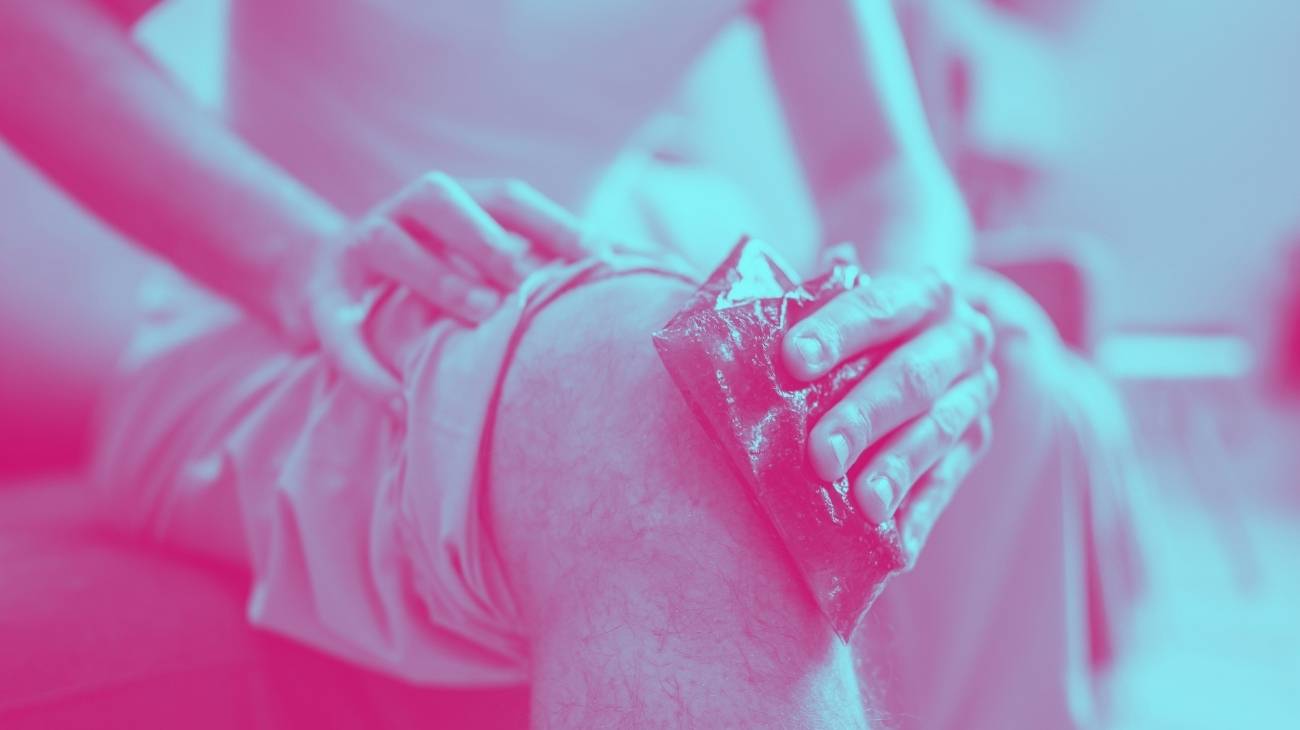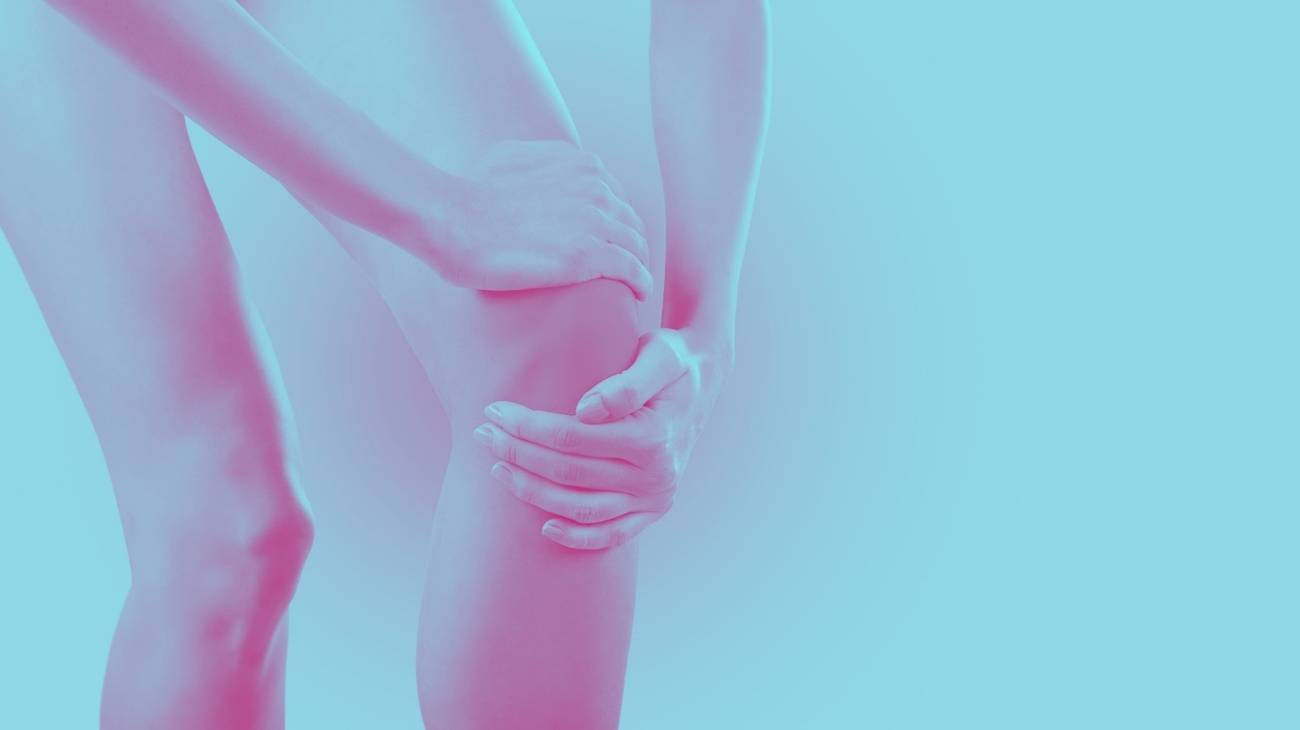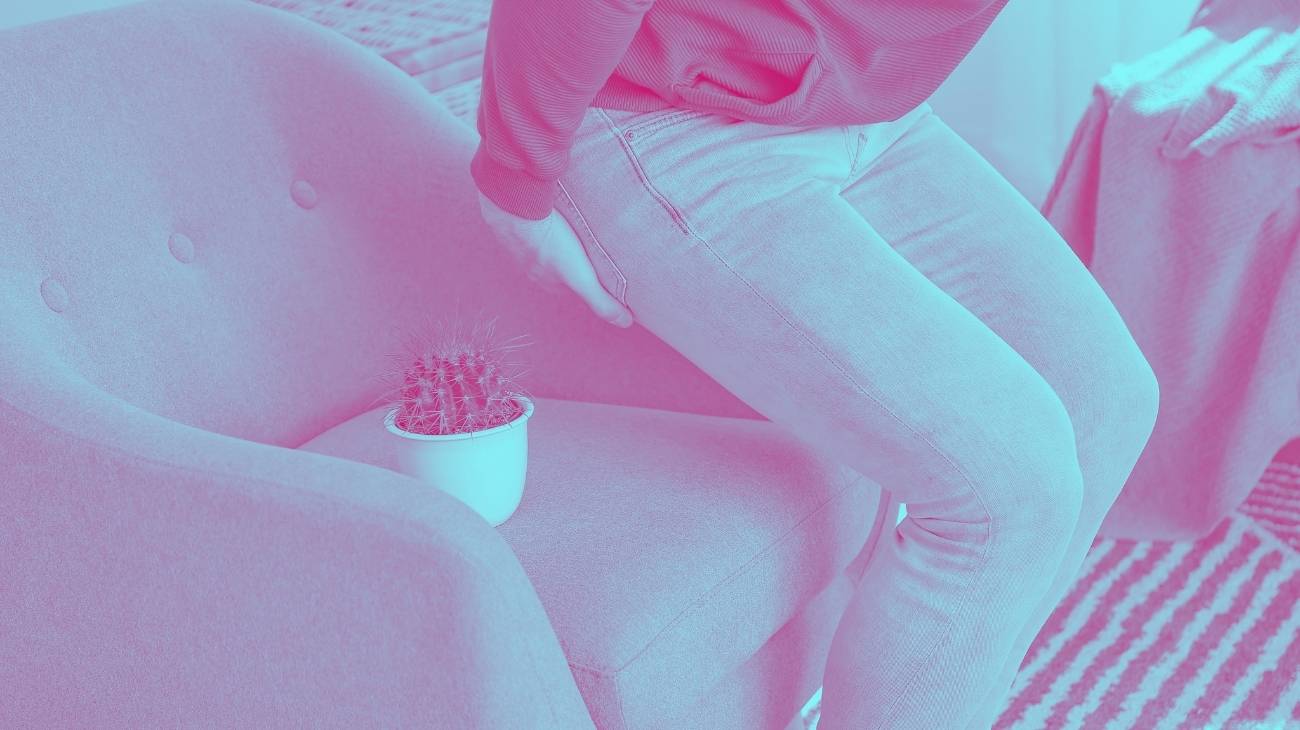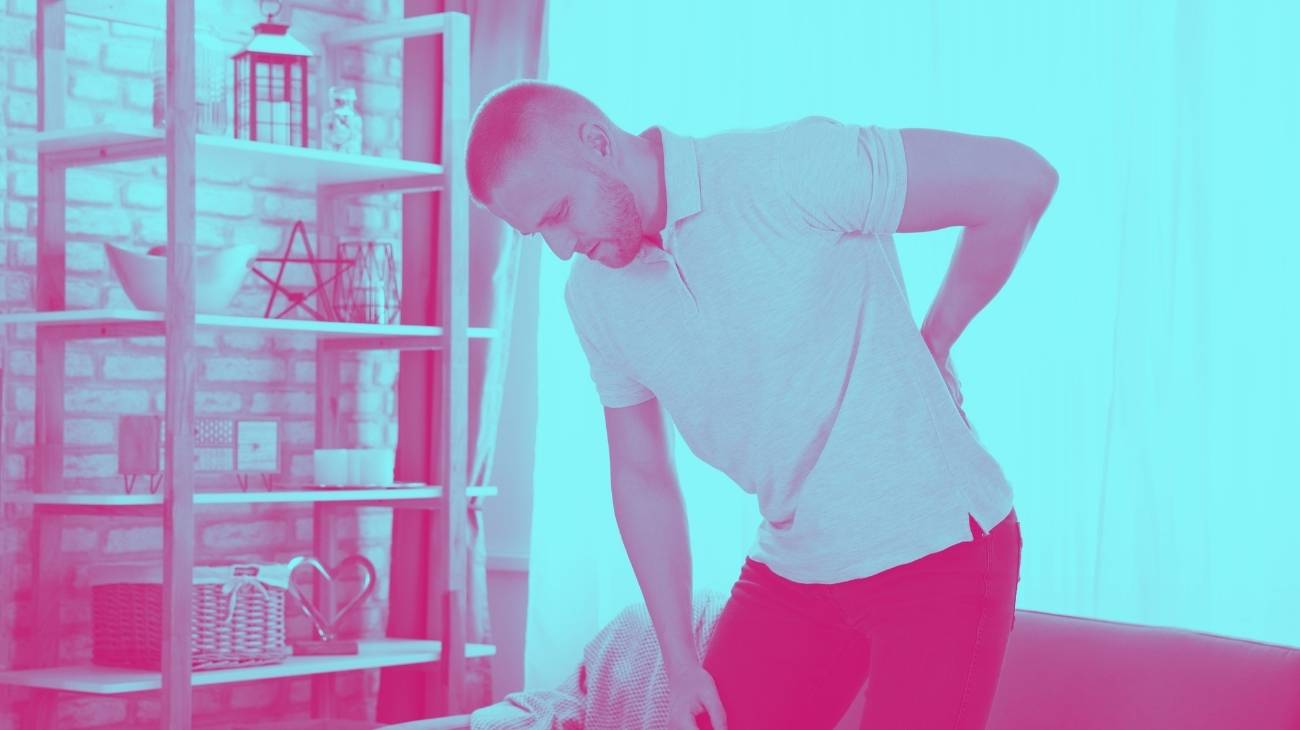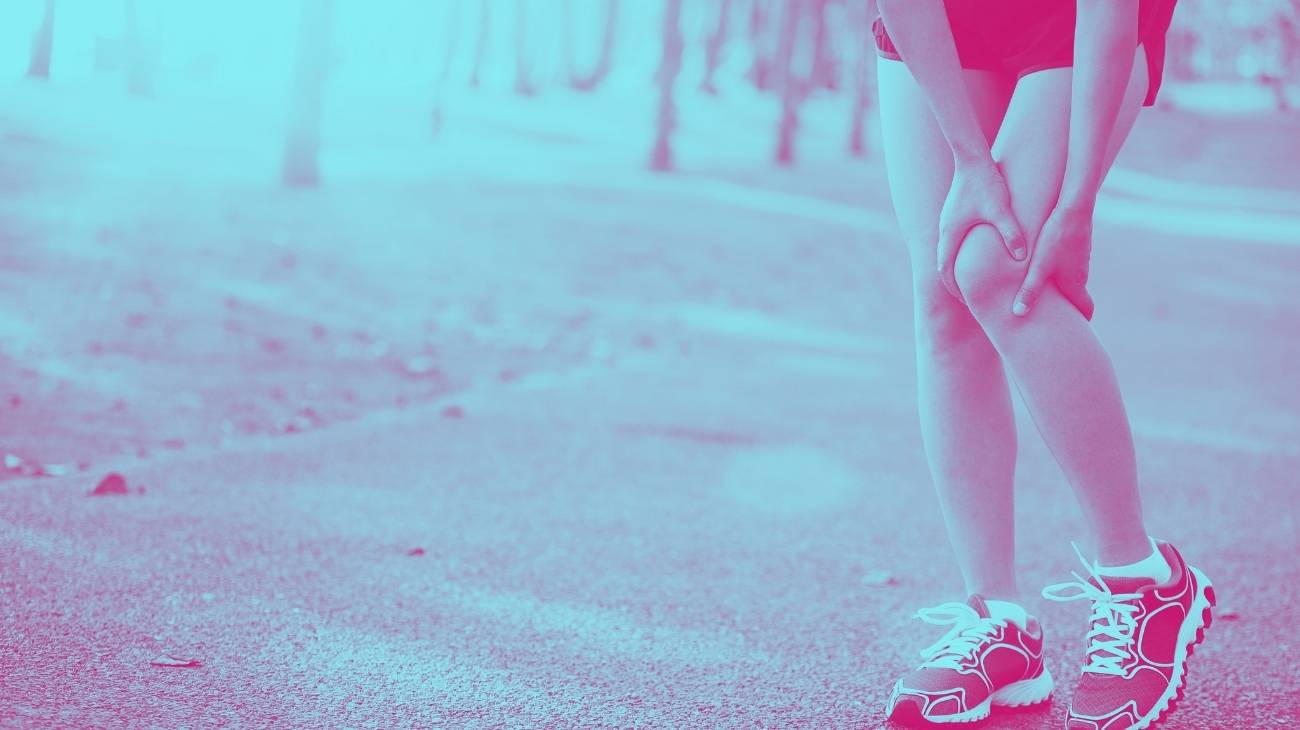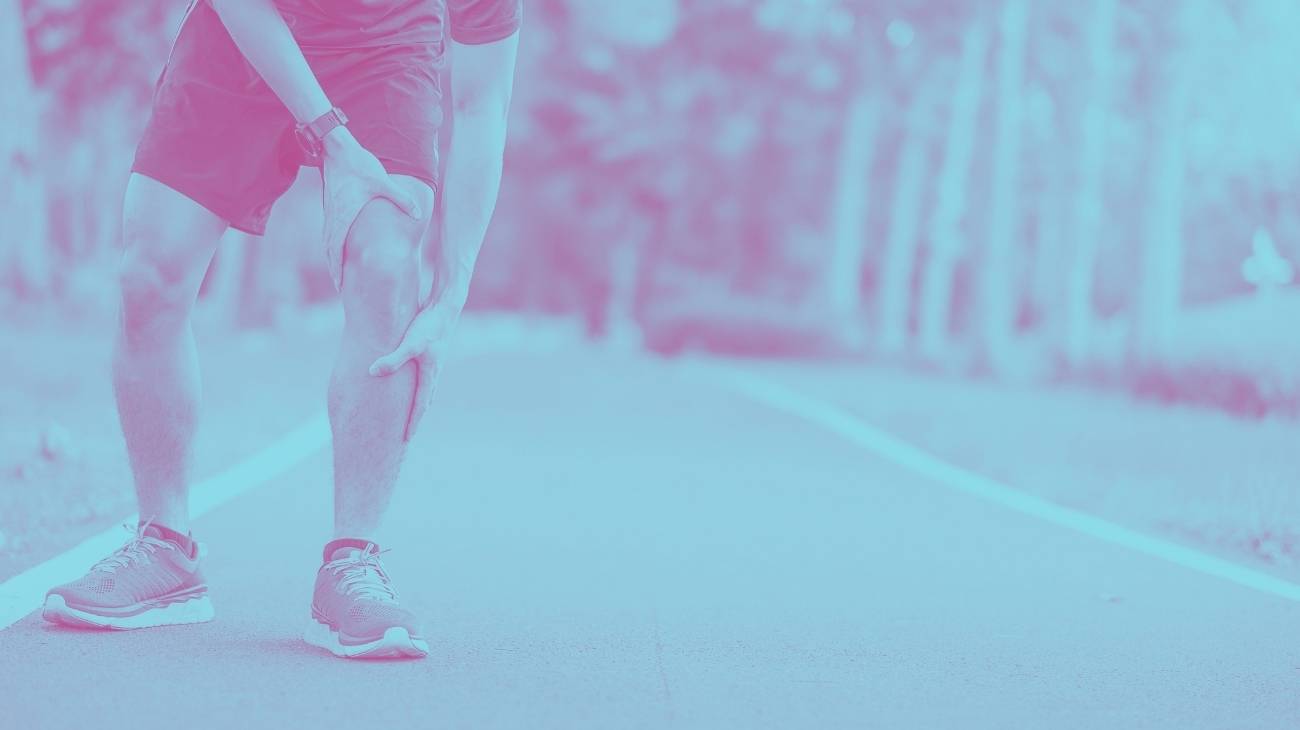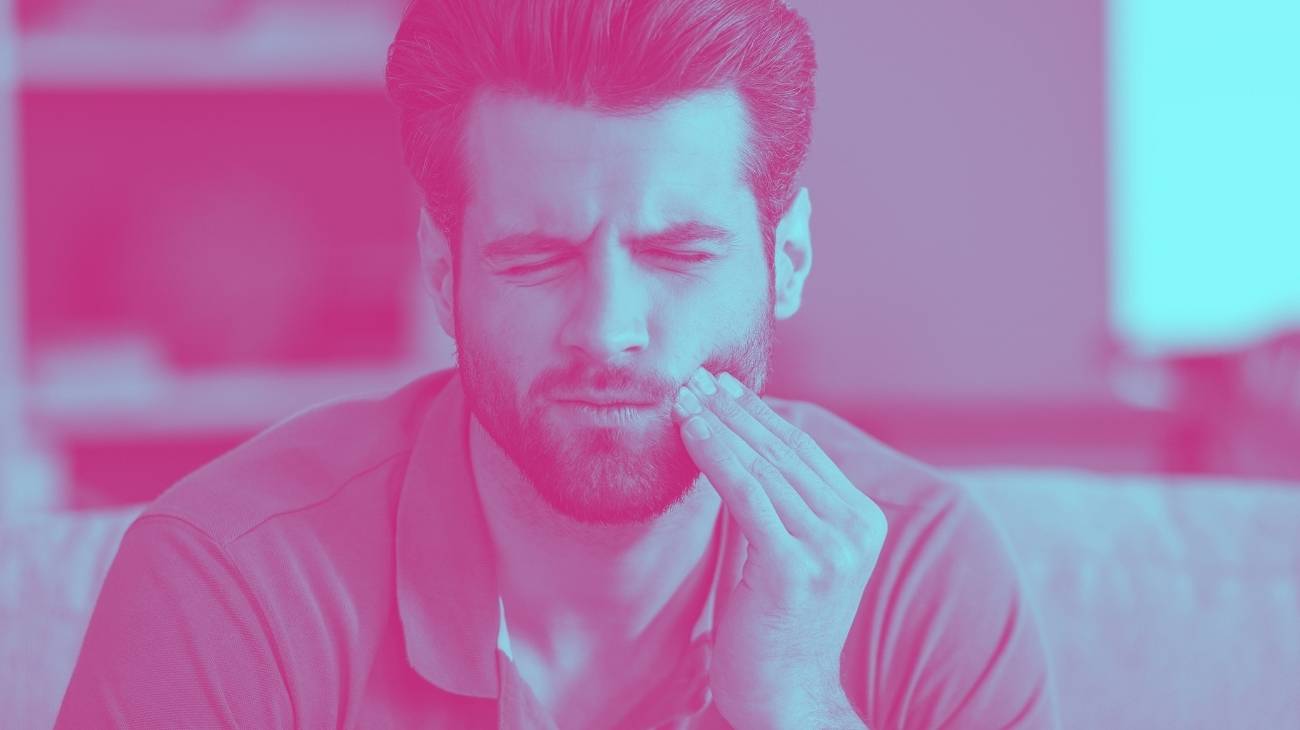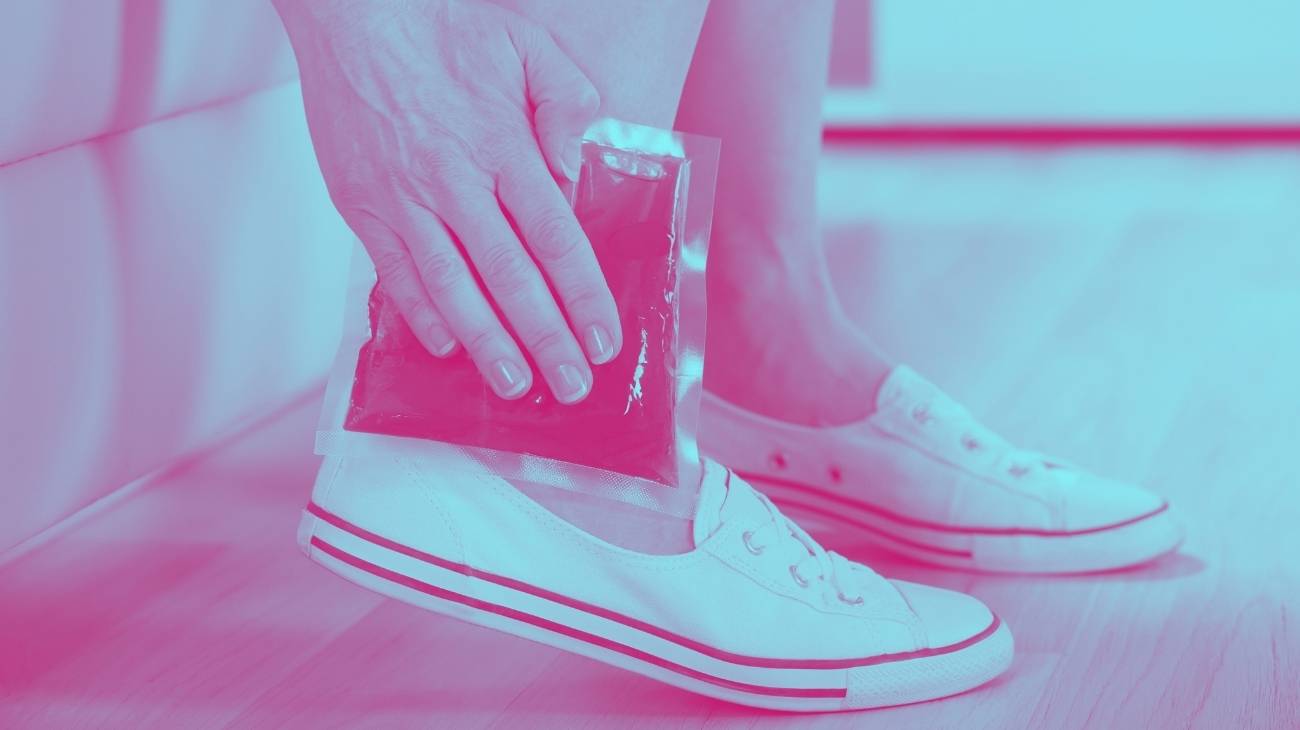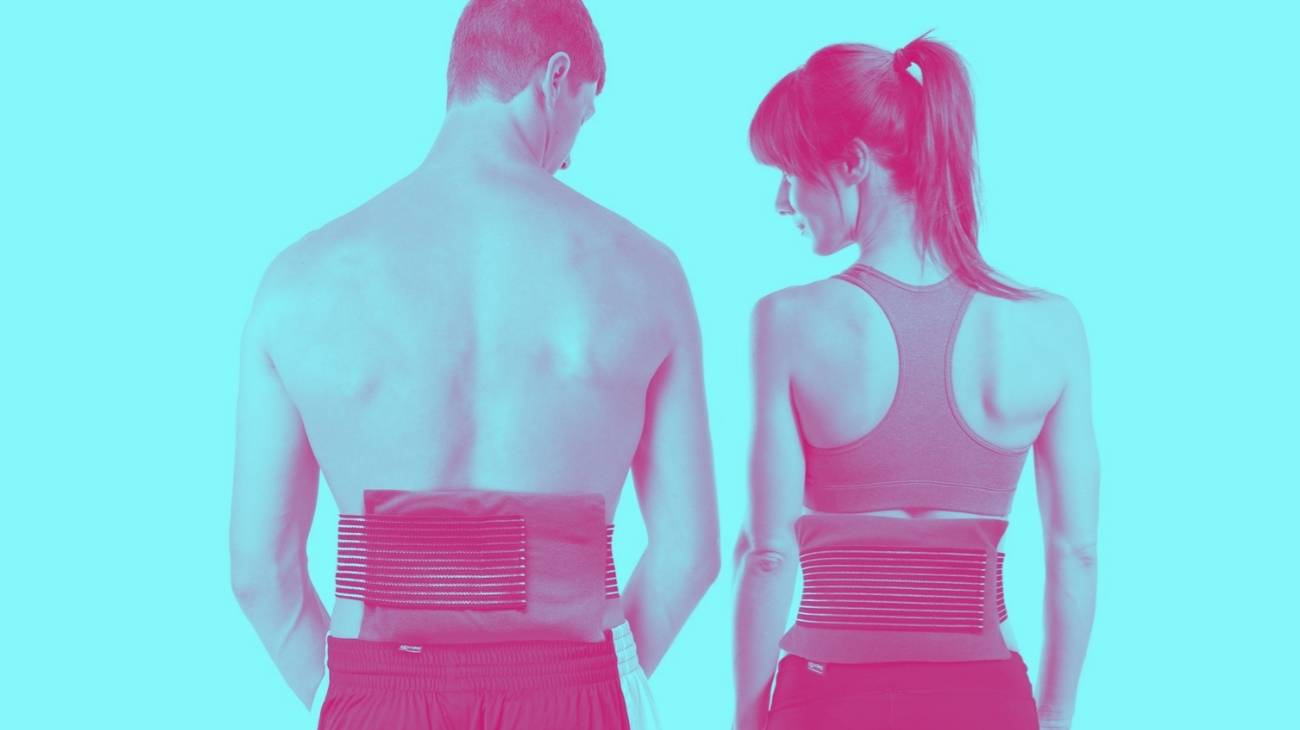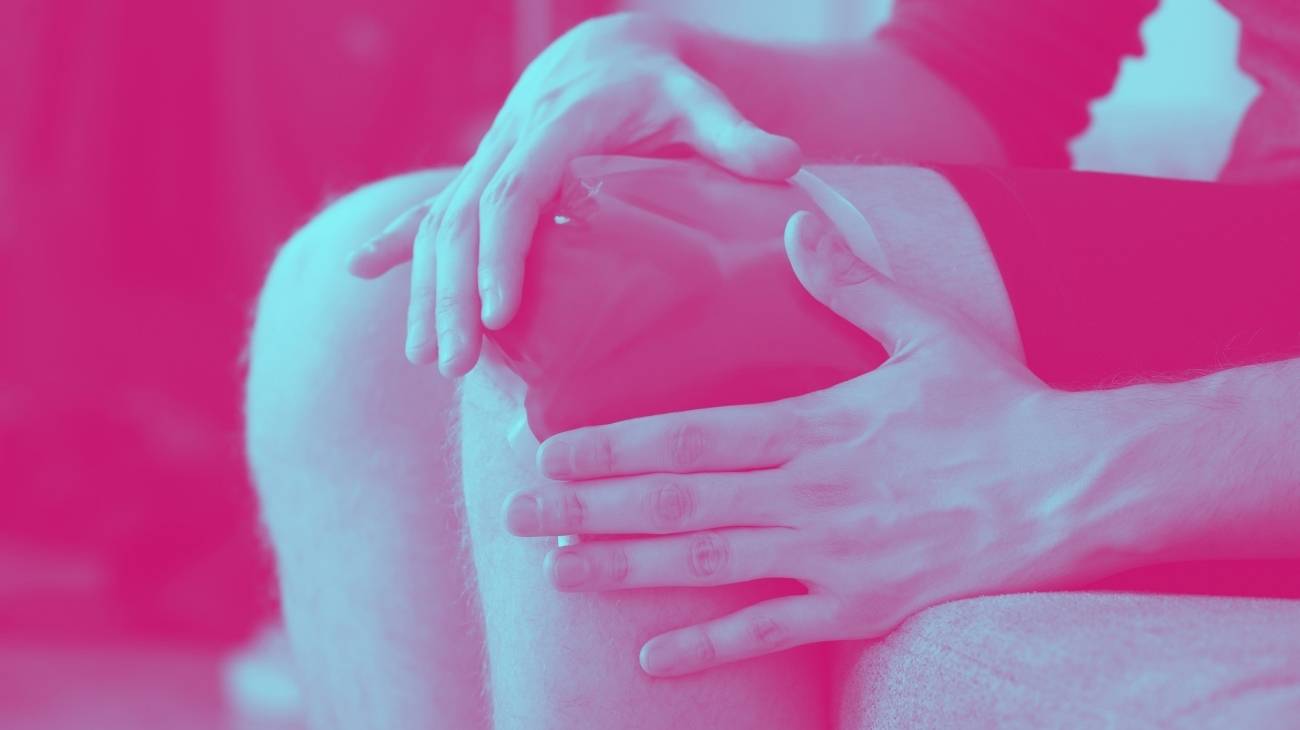- What is the best ice gel pack for tennis and golfers elbow?
- Video: How to use hot and cold gel packs?
- Types of hot & cold packs you should know about
- What are the causes of elbow pain in tennis players?
- Which is more effective in relieving elbow pain: cold or heat?
- How can hot & cold gel packs be used to relieve inflammation of the elbow?
- The best hot and cold gel packs for pain relief
Tennis elbow or golfer's elbow is a condition caused by frequent and prolonged overflexion of the elbow, resulting in greater than normal extension. It is characterised by pain on the inside of the elbow that gradually spreads to the part of the wrist closest to the little finger.
Therefore, this article will explain how to use hot and cold gel packs to relieve the pain of tennis elbow or golfer's elbow. We will also inform you about how these complaints develop and how to treat them properly.
What is the best ice gel pack for tennis and golfers elbow?
- Size: One size
- Colors: Grey and Black
- Material: Breathable
- No. of products: 1 Piece
- Uses: Rehabilitation and sports
- Always Flexible
- High Quality
- Complete pack
- Extra-Strong Velcro
- Ergonomic design
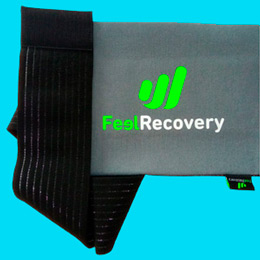
Extra-Strong Velcro
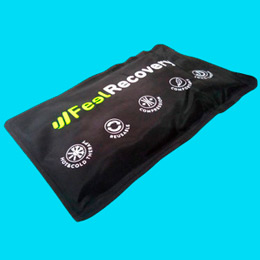
High Quality
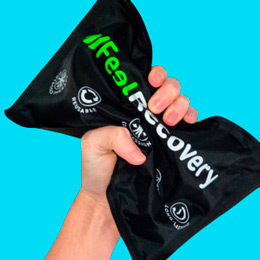
Always Flexible
- Material: Nylon
- Uses: Back, Ankle, Knee, Shoulder
- Adjustment Type: Velcro Strap
- Cover: Yes
- No. of units: 1 Gel Pack
- Hot/cold therapy
- Adjustable Velcro strap
- Microwaveable
- Good flexibility
- Short-lasting heat therapy
- Delicate wash
Arthritis, golfer's elbow syndrome and inflammation from trauma can be easily treated with this recovery support . Place in the refrigerator or freezer to get the temperature you're looking for and then place it on the side of your elbow to help you recover faster. Sweat buildup can be uncomfortable for some users and cause shifting during use.
- Material: Nylon
- Uses: Elbow
- Type of adjustment: Strap with Velcro
- Cover: Yes
- No. of units: 3 Gel Packs
- Adjustable Velcro strap
- Hot/cold therapy
- Bulky design
Its opening to place the elbow and adjustment straps become the ideal design to apply thermotherapy and cold therapy in the right places. Thanks to its structure you will be able to treat symptoms of tennis elbow, tendonitis and bursitis more easily, but it is important to consider that the type of compression may not be suitable for certain injuries.
- Material: Nylon
- Uses: Arm, Elbow
- Type of adjustment: Strap with Velcro
- Cover: Yes
- No. of units: 4 Gel Packs
- Double Velcro strap
- 4 Gel Packs
- Hot/cold therapy
- Optimal fit
- Medium flexibility with cold therapy
- Not microwaveable
If you want to achieve therapeutic effects faster, use this thermal wrap three or four times a day, exchanging cold therapy with thermotherapy. To do this, simply place the heating pad in the microwave for 60 seconds or two hours in the refrigerator to stimulate blood circulation through compression. Its design restricts movement, which may be harmful to some users.
- Hot/cold therapy
- Suitable for various body areas
- Low flexibility with cold therapy
It is suitable for use with the refrigerator or microwave, in case you want to apply heat therapy. Its materials keep the temperature controlled in sensitive areas to improve blood circulation and achieve faster natural healing effects. Keep in mind that gel pads may cause unpleasant odors during use.
- Material: Nylon
- Uses: Various body areas
- Type of adjustment: Velcro strap
- Cover: Yes
- No. of units: 2 Gel Packs
- Adjustable Velcro strap
- 2 Units per order
- Bulky design
By simply placing it in the microwave or freezer, according to your needs, you will achieve the ideal combination to combat radial tunnel syndrome, tennis elbow and bursitis. The medical gel packs are reusable, but keep in mind that for best results you will need to use it with a compression sleeve, which may be ineffective for some users.
- Material: Nylon
- Uses: Various body areas
- Type of adjustment: Velcro strap
- Cover: Yes
- No. of units: 2 Gel Packs
- Microwave safe
- Hot/cold therapy
- Quality materials
- Adjustable Velcro strap
- Medium flexibility with cold therapy
- Delicate wash
If you are looking to shorten recovery time from injury, you can use this adjustable thermal elbow pad on a daily basis by simply getting the pads to the required temperature by placing them in the microwave or refrigerator. Compression therapy can also be applied to the elbow with this versatile product, as its adjustable straps will help you find the ideal pressure to stimulate blood circulation. During use, they may cause discomfort by slipping on the arm.
- Material: Nylon
- Uses: Various body areas
- Type of adjustment: Velcro strap
- Cover: Yes
- No. of units: 2 Gel Packs
- Adjustable Velcro strap
- 2 high quality gel packs
- Hot/cold therapy
- Suitable for various body areas
- Medium flexibility with cold therapy
- Not microwaveable
The thermal wrap can be used to combat the symptoms of arthritis, tennis elbow syndrome and inflammation in the synovial bursae. All you have to do is get the necessary temperature in the microwave or refrigerator and then adjust the strap until the joint is stabilized. The compression system may be insufficient for some users.
- Material: Nylon
- Uses: Elbow, Wrist, Knee
- Type of adjustment: Strap with Velcro
- Cover: Yes
- No. of units: 2 Gel Packs
- Includes 2 Gel Packs
- Long lasting cold therapy
- Cold therapy only
You will not need much time to achieve the therapeutic temperature, since by simply placing it in the microwave or in the refrigerator you will obtain the results you are looking for to apply to the affected area. Keep in mind that, during use, the adjustable straps may weaken and lose their holding capacity.
Video: How to use hot and cold gel packs?
Types of hot & cold packs you should know about
What are the causes of elbow pain in tennis players?
Tennis elbow, also called lateral epicondylitis, and golfer's elbow, also called epitrochleitis, are very similar injuries. They are caused by repetitive overuse damage to the lower end of the humerus. They are caused by frequent and continuous movements that gradually strain or overload the elbow.
- Lateral epicondylitis affects the extensor muscles of the hand and wrist that attach to the epicondyle and causes pain in the lateral part of the elbow.
- Epicondylitis affects the flexor muscles of the hand and wrist that attach to the epicondyle. As a result, there is pain in the inner part of the elbow.
In both cases, the pain gradually spreads to the arm or forearm, especially during everyday movements. These include opening a bottle, lifting an object, carrying a shopping bag, etc. If it becomes chronic, it can even prevent sleep.
Tennis elbow often occurs in patients who play racquet sports. They perform stretching and twisting movements of the hand and wrist (especially when backhanding), which can overload the epicondylar muscles. In contrast, epicondylitis is common in golfers. If they swing incorrectly, they can overload the elbow flexors.
Tennis elbow and golfer's elbow are not limited to tennis and golf players, however. Other sports such as baseball, weightlifting, shot put, javelin throwing and others are also affected. Bricklayers, carpenters, painters, computer users and others can also be affected.
In summary, the main causes of elbow pain in tennis players, golfers and racket athletes are the following:
- Occupational, sporting or recreational activities that lead to overuse, strain or injury to the epicondyle or epitrochlea.
- Inability to use proper technique in sports such as tennis, golf, baseball and other racquet sports.
- Lifting weights or using sports equipment that is not adapted to the athlete's level.
- Poor posture during sports or work, e.g. using a computer, especially a laptop.
- Lack of warming up and stretching during sport and physical activity.
- Straining of soft tissue at or near the elbow caused by an abnormality (e.g. legs of different lengths) or misalignment of bones or joints.
- Diseases or conditions such as arthritis, osteoarthritis, gout, psoriasis, thyroid, etc.
- Frequent and repetitive movements due to excessive use of mobile phones.
- Other causes are infections, stress and insomnia.
Which is more effective in relieving elbow pain: cold or heat?
Once a patient has been diagnosed with tennis or golfer's elbow, treatment may vary depending on the severity of the injury. It is therefore important to consult a specialised doctor or physiotherapist who will recommend appropriate and timely treatment depending on the nature of the injury.
In any case, it is very important to identify the cause of the problem and avoid it if possible. However, it is not enough to refrain from the activity that caused the condition, but certain measures must be taken. Usually, these injuries are treated by applying a strap to the forearm, just below the elbow. This can reduce the traction on the epicondyle or epitrochlea. This reduces the swelling and pain associated with the injury.
Physiotherapists also use massage or techniques such as electrotherapy, shock waves and infiltration. Self-massage and stretching can also bedone at home. Many physiotherapists also recommend heat and cold therapy to treat lateral epicondylitis and epitrochleitis. An excellent option is the use of hot and cold gel packs.
Below I will explain the main benefits of high and low temperatures in the treatment of tennis elbow or golfer's elbow:
Advantages of cold
In sports, it is very common to use cold for therapeutic purposes (cryotherapy). In fact, the use of low temperatures for injuries such as tennis elbow or golfer's elbow has the following advantages:
- Anti-inflammatory: Cold helps reduce inflammation caused by lateral epicondylitis and epitrochleitis. This is because low temperatures cause vasoactive substances to decrease. This reduces the body's inflammatory response and reduces swelling.
- Pain relief: The application of cold relieves the pain associated with tennis elbow or golfer's elbow. This is because low temperatures interrupt the transmission of nerve impulses associated with the sensation of pain.
- Vasoconstriction: Cold causes the blood vessels to constrict. This reduces blood flow, which helps to reduce bruising and bleeding.
Advantages of heat
The use of heat for therapeutic purposes (thermotherapy) is undoubtedly one of the most commonly used techniques for treating various musculoskeletal injuries. This applies to tennis elbow or golfer's elbow, which can be treated by applying high temperatures. This results in the following advantages:
- Vasodilatation: Heat causes the blood vessels to dilate, allowing more blood to flow to the treated area. This nourishes the tissues and promotes the elimination of toxins.
- Rapid recovery: The increased blood flow facilitates the healing of damaged tissue.
- Pain-relieving and relaxing effect: The application of heat relieves pain and muscle tension. This is largely due to the vasodilation caused by the high temperatures.
- Reduces joint stiffness: The heat causes a noticeable change in the physical state of the fibrous and elastic tissues. At high temperatures, they can stretch more easily, which reduces the stiffness of the joints.
How can hot & cold gel packs be used to relieve inflammation of the elbow?
Hot and cold gel packs are very useful in treating tennis elbow or golfer's elbow. These gel packs can reach high and low temperatures and maintain them for a long time, making them ideal for hot and cold therapy.
Use of cold
The use of cold is indicated for lateral epicondylitis when the injury is in its early stages. That is, in the first 48 hours, when the pain is intense but short-lived.
If you want to know how to properly apply gel-filled heat/cold packs to relieve elbow inflammation due to lateral epicondylitis, follow these recommendations:
- Place the pack in the freezer for about 2 hours.
- Take the pack out and check the temperature.
- If necessary, freeze a little longer. However, if it is too cold, you can let it warm up a little in the fresh air.
- Place the cold gel pack on the elbow area for 20 minutes.
- Repeat this session 3 or 4 times a day at one hour intervals.
- Be sure to observe the wound every 5 minutes while the cold is in contact with the skin to prevent damage.
- With our cold gel packs, you do not need to apply cloths or towels to avoid direct contact with the skin as they have a protective cover.
Use of heat
Heat is indicated after the first 48 hours, especially for long-lasting chronic pain. The application of our gel heat packs is very simple. Just follow the recommendations below:
- To put the hot/cold gel pack in the microwave, it must be at room temperature. Simply place it in the 800 W microwave for about 30 seconds. If your microwave has a different power setting, you will have to try several times until you find the right time.
- Remove the thermal gel pack and massage it to distribute the heat evenly.
- Check that it has reached the desired temperature. If you need to heat it further, microwave it in 10-second increments until it reaches the ideal temperature.
- To heat the cooker, put 3.5 litres of water in a saucepan and bring it to the boil.
- Once the water is boiling, turn off the cooker and place the gel pack in the pot for 7-8 minutes. Carefully remove the pack and check the temperature. If you want to heat it further, dip the gel pack into the water at one-minute intervals until it reaches a temperature that does not cause burning.
- Place the gel pack on the elbow area for 15 to 20 minutes.
- Do this 3-4 times a day.

